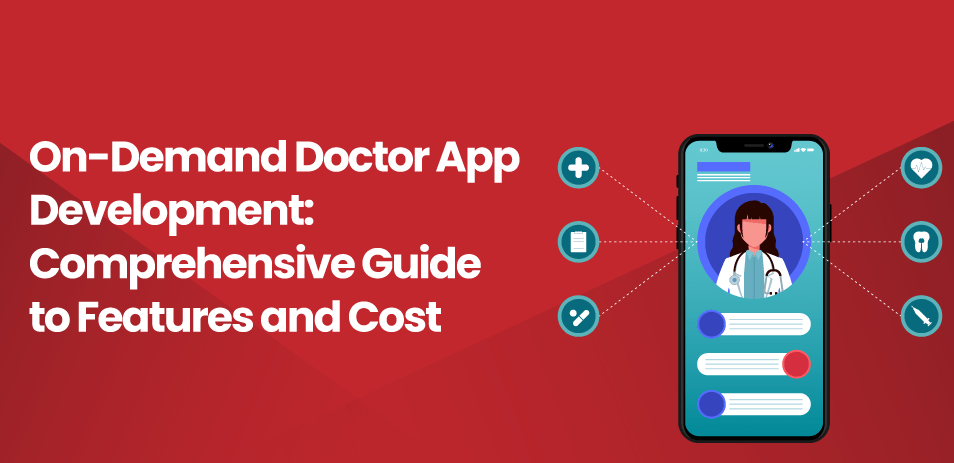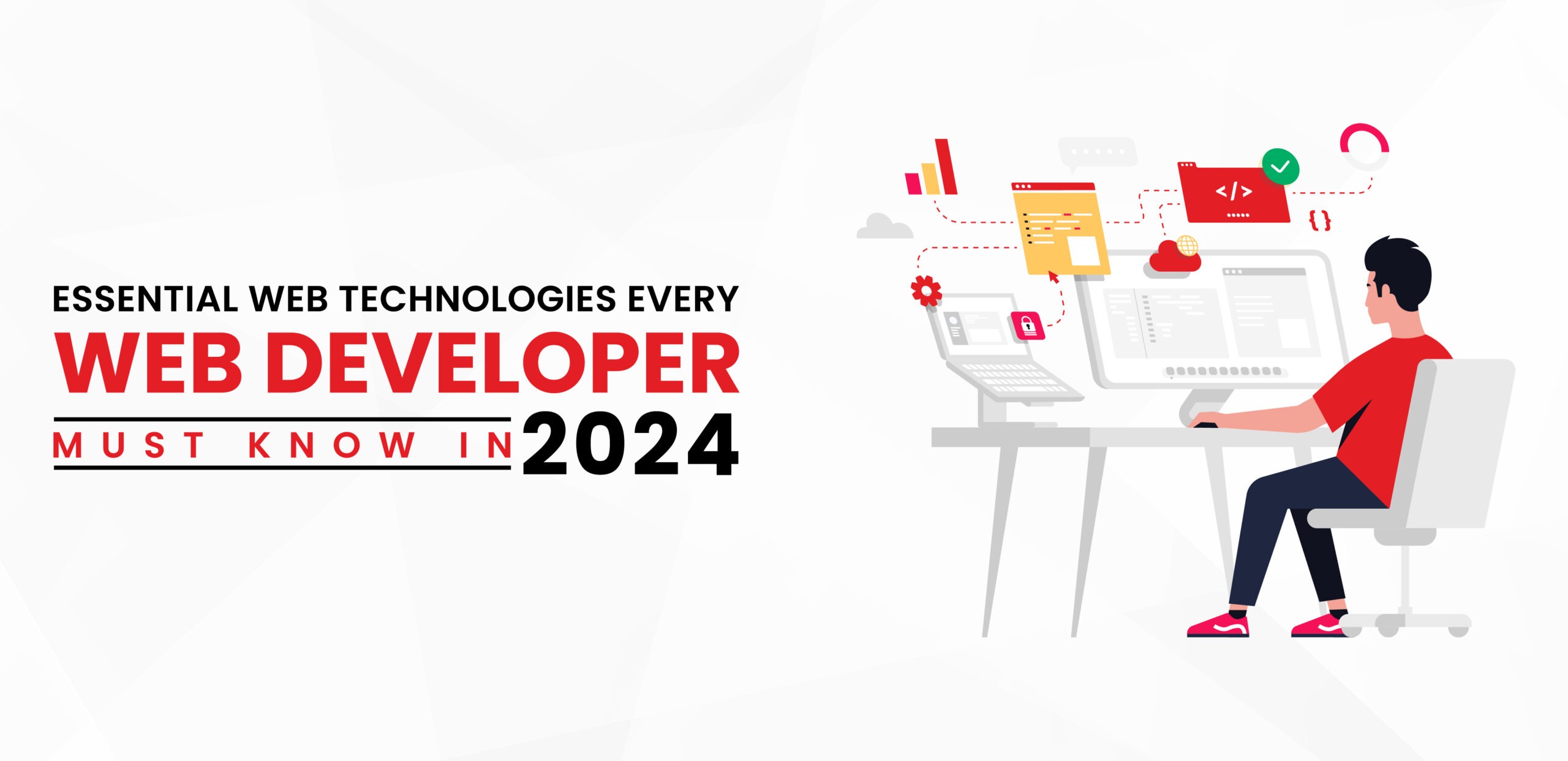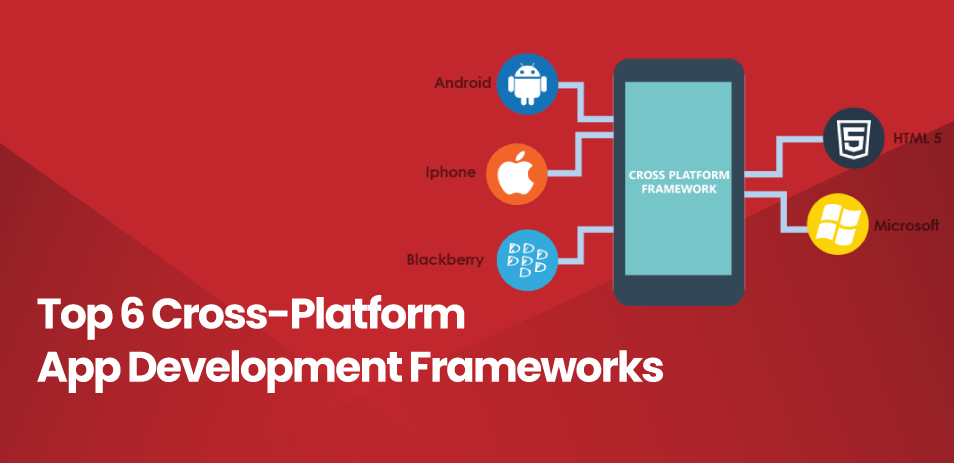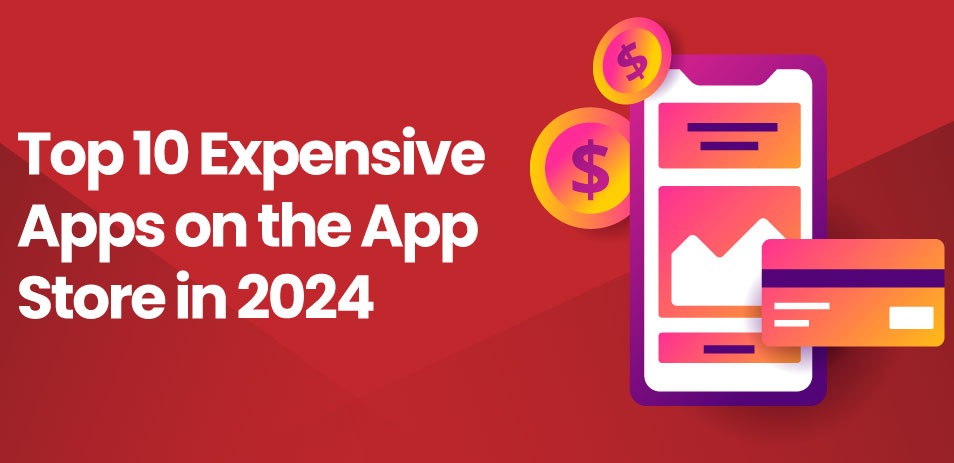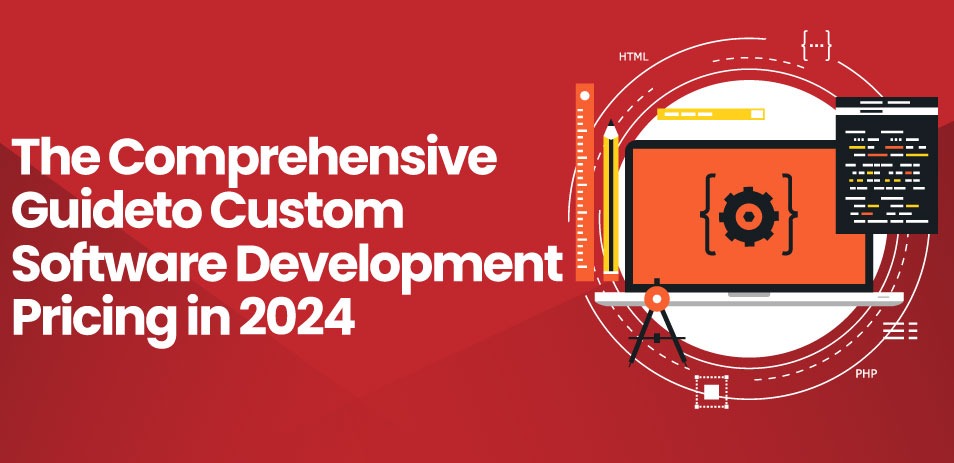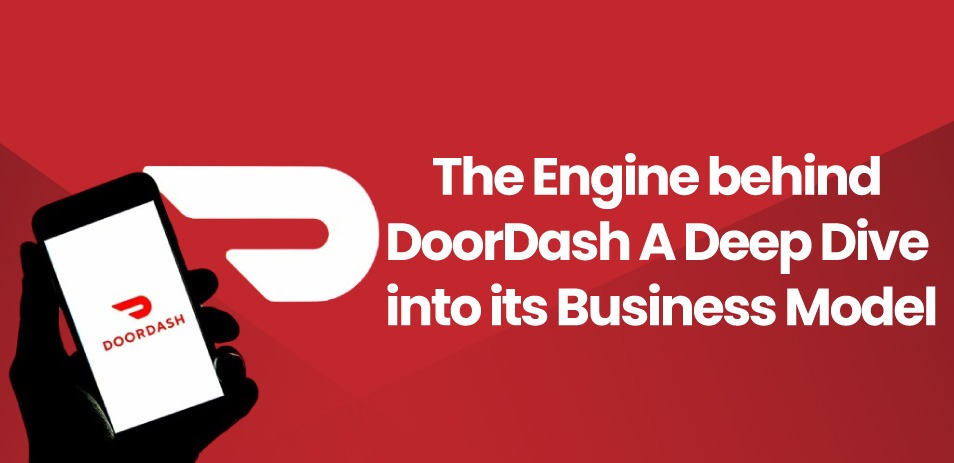Patients are increasingly seeking convenient and immediate access to medical care, bypassing the traditional, often cumbersome, process of scheduling in-person doctor visits. On-demand doctor apps have revolutionized the healthcare industry by offering a seamless, efficient, and accessible way for patients to consult with healthcare professionals from the comfort of their homes. These apps not only save time but also provide a critical solution for those living in remote areas or with limited mobility.
This blog will serve as a comprehensive guide for anyone interested in developing an on-demand doctor app. We will delve into the step-by-step process of bringing such an app to life, from initial planning and research to deployment and maintenance. Additionally, we will explore the essential features that make these apps effective and user-friendly, such as appointment scheduling, video consultations, and secure messaging.
We will discuss the various factors that influence the cost of development, providing a detailed breakdown to help you budget effectively. Whether you’re a healthcare provider looking to expand your services or an entrepreneur eyeing the booming health tech industry, this guide will equip you with the knowledge needed to succeed.
Current Trends in Telemedicine and Healthcare Apps
Telemedicine and healthcare apps are at the forefront of a significant transformation in the healthcare industry. Recent trends show a remarkable surge in the adoption of these technologies, driven by advancements in mobile connectivity, an increasing emphasis on patient-centric care, and the need for efficient healthcare delivery systems. The COVID-19 pandemic has further accelerated this shift, highlighting the importance of remote healthcare solutions.
Several trends characterize the current landscape:
- Integration with Wearable Devices: Many healthcare apps now integrate with wearable devices to provide real-time health monitoring and personalized care.
- AI and Machine Learning: These technologies are being leveraged to offer predictive analytics, symptom checkers, and personalized health recommendations.
- Comprehensive Health Platforms: Apps are evolving into holistic platforms offering a range of services from consultation to chronic disease management.
Ready to revolutionize healthcare with your own on-demand doctor app?
Contact us today to discuss your project requirements, get a personalized consultation, and receive a detailed proposal for on-demand app development.
Yes Let’s goStatistics on the Growth of On-Demand Doctor Services
The growth of on-demand doctor services is evident from various statistics:
- According to a report by Global Market Insights, the telemedicine market is expected to exceed $186 billion by 2026, growing at a compound annual growth rate (CAGR) of over 19%.
- A study by McKinsey & Company indicated that telehealth usage has increased 38 times from the pre-COVID-19 baseline.
- Reports from Statista show that the number of mobile health app downloads worldwide reached 3.7 billion in 2021, reflecting a growing user base for health-related apps.
Benefits of On-Demand Doctor Apps
Convenience for Patients
On-demand doctor apps offer unparalleled convenience to patients. With these apps, patients can:
- Schedule appointments at their convenience without the need for long waits.
- Access medical consultations from anywhere, reducing the need for travel.
- Receive immediate medical advice and prescriptions, enhancing overall patient satisfaction.
Increased Accessibility to Healthcare
These apps bridge the gap between patients and healthcare providers, especially in underserved or rural areas where access to medical facilities is limited. Key benefits include:
- Providing healthcare access to those who might have mobility issues or live in remote locations.
- Offering 24/7 availability, ensuring that medical help is always at hand.
- Enabling continuous care for chronic conditions through regular virtual check-ups.
Potential Cost Savings for Both Patients and Providers
On-demand doctor apps can lead to significant cost savings:
For Patients:
- Reducing travel expenses and time off work to attend appointments.
- Lowering the cost of consultations compared to traditional in-person visits.
For Providers:
- Decreasing overhead costs associated with running a physical office.
- Optimizing appointment scheduling to reduce no-show rates and improve resource utilization.
- Allowing for the efficient management of patient records and streamlined administrative tasks through digital platforms.
Key Features of an On-Demand Doctor App
Developing an on-demand doctor app involves incorporating a range of features that ensure a seamless, secure, and user-friendly experience for both patients and healthcare providers. Here are the essential features:
User Profiles
Patient Profiles
Personal Information: Basic details such as name, age, gender, and contact information.
- Medical History: Comprehensive records of past illnesses, treatments, allergies, and ongoing medications.
- Insurance Details: Information on the patient’s insurance plan for easy billing and claims processing.
- Appointment History: Log of past and upcoming appointments for easy reference.
Doctor Profiles
- Professional Information: Details like qualifications, specializations, experience, and credentials.
- Availability Schedule: Calendar integration to show available slots for appointments.
- Patient Reviews: Feedback and ratings from previous consultations to help new patients make informed choices.
- Consultation History: Records of past consultations for reference during follow-ups.
Appointment Scheduling
- Real-Time Availability: Display of doctors’ available slots in real-time for convenient booking.
- Booking and Cancellation: Easy booking process with options to reschedule or cancel appointments.
- Reminders and Notifications: Automated reminders for upcoming appointments via push notifications, SMS, or email to reduce no-shows.
Video Consultation
- High-Quality Video Calls: Secure, high-definition video conferencing to simulate in-person consultations.
- Screen Sharing and Document Uploads: Features for doctors to share medical documents, reports, or charts during the call.
- Integration with Medical Devices: Optional integration with health monitoring devices for real-time data sharing.
In-App Messaging
- Secure Chat: Encrypted messaging platform for patients to communicate with doctors before and after consultations.
- Multimedia Support: Ability to send images, videos, and documents through the chat for better communication.
- Notifications: Real-time alerts for new messages to ensure timely responses.
Payment Gateway Integration
- Multiple Payment Options: Support for various payment methods, including credit/debit cards, mobile wallets, and direct bank transfers.
- Insurance Processing: Seamless integration with insurance providers for direct billing and claims.
- Transaction History: Detailed records of all transactions for patient reference and financial tracking.
Prescription Management
- E-Prescriptions: Digital prescriptions sent directly to the patient’s profile or via email.
- Pharmacy Integration: Option to link with local pharmacies for direct order placement and delivery of medications.
- Refill Reminders: Automated alerts for prescription refills to ensure continuous medication adherence.
Medical Records
- Secure Storage: Encrypted storage of medical records to ensure privacy and compliance with regulations like HIPAA.
- Easy Access: Patients and doctors can easily access and share medical records as needed.
- Health Analytics: Tools for tracking health metrics and trends over time.
Ratings and Reviews
- Feedback System: Patients can rate their consultation experience and leave reviews for doctors.
- Quality Control: Doctors can respond to reviews, and admins can monitor feedback to maintain service quality.
- Transparency: Ratings and reviews help new patients choose the right healthcare provider based on real user experiences.
Step-by-Step Guide to Developing an On-Demand Doctor App
Planning and Research
The first step in developing an on-demand doctor app is thorough planning and research. This phase involves identifying the target audience, understanding their needs, and defining the goals and objectives of the app. Market research is crucial to analyze competitors, understand industry trends, and identify potential gaps in the market that your app can fill. This foundational work will guide all subsequent stages of development and ensure that the app meets user demands and stands out in a competitive market.
Choosing the Right Technology Stack
Selecting the appropriate technology stack is essential for the app’s performance, scalability, and security. The technology stack includes the programming languages, frameworks, databases, and tools that will be used to develop the app. For the front end, popular choices include React Native or Flutter for cross-platform development, or Swift and Kotlin for native iOS and Android development, respectively. The back end may use Node.js, Django, or Ruby on Rails, with databases like MongoDB or PostgreSQL. The choice of technology should align with the app’s requirements, developer expertise, and budget.
Design and Prototyping
Design and prototyping focus on creating an intuitive and aesthetically pleasing user interface (UI) and a seamless user experience (UX). This phase involves creating wireframes to outline the app’s structure and flow, followed by detailed mockups and prototypes that provide a visual representation of the app. User feedback is critical at this stage to refine the design and ensure it meets user expectations. Tools like Sketch, Figma, or Adobe XD are commonly used for design and prototyping.
Development
The development phase is where the actual coding of the app takes place. This stage is divided into front-end and back-end development. Front-end development focuses on building the user interface and ensuring a responsive design that works well on various devices. Back-end development involves creating the server-side logic, database management, and integrating third-party services such as payment gateways and video call APIs. The development process follows an agile methodology, with iterative cycles of coding, testing, and refinement to ensure the app meets the required standards and functionalities.
Testing
Testing is a critical phase to identify and fix bugs, ensure functionality, and verify that the app meets the specified requirements. Different types of testing are conducted, including unit testing for individual components, integration testing to ensure different parts of the app work together seamlessly, and user acceptance testing (UAT) to validate the app with real users. Additionally, security testing is essential to protect sensitive patient data and ensure compliance with regulations like HIPAA. Continuous testing throughout the development process helps in maintaining high quality and reliability.
Deployment
Deployment involves releasing the app to the public. This phase includes preparing the app for submission to app stores (Apple App Store and Google Play Store), which requires adherence to their guidelines and passing their review processes. Before the full launch, a beta testing phase may be conducted to gather feedback from a limited audience and make any necessary improvements. Once approved, the app is made available for download, and promotional activities can commence to attract users.
Maintenance and Updates
Post-launch, the app requires ongoing maintenance and regular updates to ensure it continues to function smoothly and remains relevant to users. Maintenance includes fixing any bugs that arise, optimizing performance, and ensuring compatibility with new OS versions. Updates are crucial to add new features, enhance security, and improve the user experience based on feedback. An effective maintenance and update strategy helps in retaining users and maintaining the app’s competitive edge in the market.
Cost of Developing an On-Demand Doctor App
Factors Influencing Cost
The cost of developing an on-demand doctor app can vary significantly based on several factors. Understanding these factors is essential for accurate budgeting and efficient resource allocation.
Complexity of Features
The complexity and number of features are primary cost drivers. A basic app with essential functionalities like user profiles, appointment scheduling, and video consultations will cost less than a comprehensive platform with advanced features such as AI-driven health analytics, real-time integration with wearable devices, and multilingual support.
Choice of Platform
Developing for a single platform (iOS or Android) is generally less expensive than creating a cross-platform app. Cross-platform development tools like React Native or Flutter can reduce costs by allowing a single codebase for both platforms, but native apps can offer better performance and user experience, potentially increasing development time and costs.
Design Requirements
The level of customization and sophistication in the app’s design impacts costs. A simple, clean design with standard UI components will be more cost-effective compared to a highly customized UI/UX with intricate animations and graphics. The design phase also includes prototyping and user testing, which add to the overall cost.
Development Team’s Location and Expertise
The geographic location of the development team plays a significant role in cost. Development rates vary widely across regions:
- North America and Western Europe typically have higher rates ($100-$200 per hour).
- Eastern Europe and Latin America offer moderate rates ($40-$100 per hour).
- Asia, particularly India, offers the most cost-effective rates ($20-$50 per hour).
The expertise and experience of the development team also affect costs. Highly skilled developers command higher rates but can deliver higher quality and more efficient code, potentially reducing overall project time and post-launch maintenance costs.
Cost Breakdown
Planning and Research Costs
This initial phase involves market research, competitor analysis, and defining the app’s goals and requirements. Depending on the project’s scope, costs can range from $5,000 to $15,000.
Design Costs
Design costs cover UI/UX design, wireframing, and prototyping. A basic design can cost between $5,000 and $10,000, while a more complex and customized design might range from $15,000 to $25,000.
Development Costs
Development is the most significant cost component, divided into front-end and back-end development.
- Basic App: For a simple app with core features, expect to pay between $30,000 and $50,000.
- Moderate Complexity: An app with additional features like e-prescriptions and in-app messaging can range from $50,000 to $100,000.
- Highly Complex App: For an app with advanced features and integrations, costs can exceed $150,000.
Testing and Deployment Costs
Testing ensures the app is bug-free and performs well under various conditions. Costs for testing range from $5,000 to $15,000. Deployment involves preparing the app for release, including app store submissions and beta testing, typically costing between $3,000 and $10,000.
Maintenance and Update Costs
Post-launch maintenance is crucial for app performance and user satisfaction. Annual maintenance costs can range from 15% to 20% of the initial development cost. Regular updates and new feature additions can add $10,000 to $30,000 per year, depending on the app’s complexity and user feedback.
Estimated Total Cost
The total cost of developing an on-demand doctor app depends on the project’s scope and complexity. Here are some estimated ranges:
- Basic App: $50,000 to $70,000
- Moderate Complexity: $80,000 to $150,000
- Highly Complex App: $200,000 and above
These estimates provide a general guideline, but actual costs may vary based on specific project requirements and unforeseen challenges. Careful planning, clear communication with the development team, and ongoing evaluation can help manage costs effectively and ensure the successful development of an on-demand doctor app.
Are you ready to redefine healthcare access and delivery with your own on-demand doctor app?
Let’s collaborate to create a cutting-edge on-demand doctor app that enhances patient care, expands your reach, and drives success in the rapidly evolving telemedicine landscape.
Yes Let’s goConclusion
The rise of telemedicine and the increasing demand for convenient healthcare solutions have made on-demand doctor apps a vital component of modern healthcare. By understanding the comprehensive process of on demand app development, from initial planning and research to deployment and maintenance, stakeholders can create effective and user-friendly platforms. These apps not only improve patient access to healthcare but also provide significant cost savings and operational efficiencies for healthcare providers.
Developing a successful on-demand doctor app requires careful consideration of various factors, including the choice of platform, feature complexity, design requirements, and the expertise of the development team. While the initial investment might seem substantial, the long-term benefits in terms of patient satisfaction, improved healthcare delivery, and potential market share are significant.
As telemedicine continues to grow, the opportunity for on demand app development in the healthcare sector is immense. By integrating essential features such as secure video consultations, appointment scheduling, and e-prescriptions, developers can create comprehensive and reliable healthcare solutions. Whether you are a healthcare provider looking to expand your services or an entrepreneur aiming to enter the health tech market, understanding these development processes and cost considerations is crucial for creating a successful on-demand doctor app.

